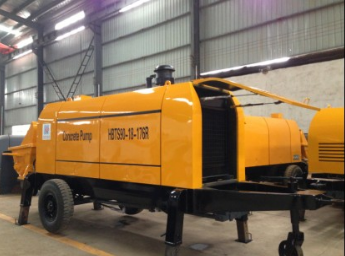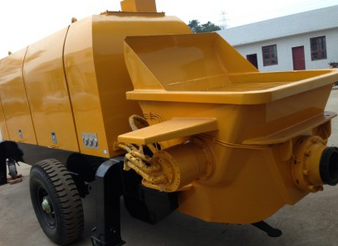There are two main types of concrete pump – they are mobile pumps and stationary pumps. Typically, stationary concrete pumps were used in built-up areas, where large projects are taking place and the pump will not need to be moved for a long time. However, even for these projects, mobile concrete pumps are becoming increasingly popular.
There are a lot of complexities associated with placing concrete pumps. The space requirements can be large, and the set-up time is also an issue. Trailer-mounted, mobile concrete pumps are much easier to move into place, and they can help contractors to get around the access and weight restrictions associated with more difficult sites.
On some construction sites, the placement of the machinery must be carefully planned, and it may need to be altered as the project is carried out. This is especially true on, say, high-rise projects.
Trailer mounted concrete pumps can have booms attached to them which can be positioned to ensure accurate pouring. The booms can cover distances of more than 350m in some cases, with significant vertical reach too. The flow rate of these pumps varies, with small concrete pumps offering just 15m3 per hour, but some bigger pumps can pour up to 120m3 per hour. Stationary pumps can often pour more concrete, but the lack of mobility means that the relative efficiency could actually work out in favor of the mobile pumps over the course of the whole project.
Static Pumps
Static concrete pumps use stationary placing booms. A powered (electrical or diesel) pump will push the concrete out over the target area. The setup time for static pumps is longer, but the pour time is usually much quicker. If you have a fairly predictable area to cover, and the layout of the site means it is easy to access that area in one go, then using a static pump could well be a good idea.
In general, static pumps are the best choice for large structures, because you can place the booms and get the pouring done quickly, reducing crane time and also making the site safer and easier to navigate for the rest of the workers. Mobile concrete pumps is a better choice for smaller sites, where access is an issue and you need the flexibility of being able to set up a pump quickly, cover one area, then move the equipment.
Both pumping systems have their place in the world of construction, and both systems are capable of being used for heavy-duty work. In the end, your site manager and project managers will be the best people to make the decision, depending on the labor and equipment needs of your site. Both machines are fairly easy to operate, and can achieve clean, highly targeted concrete pouring. Contact your concrete boom pump manufacturers today to discuss the specific requirements of your building project. They will be able to offer you more detailed advice about the types of machines they have available.

